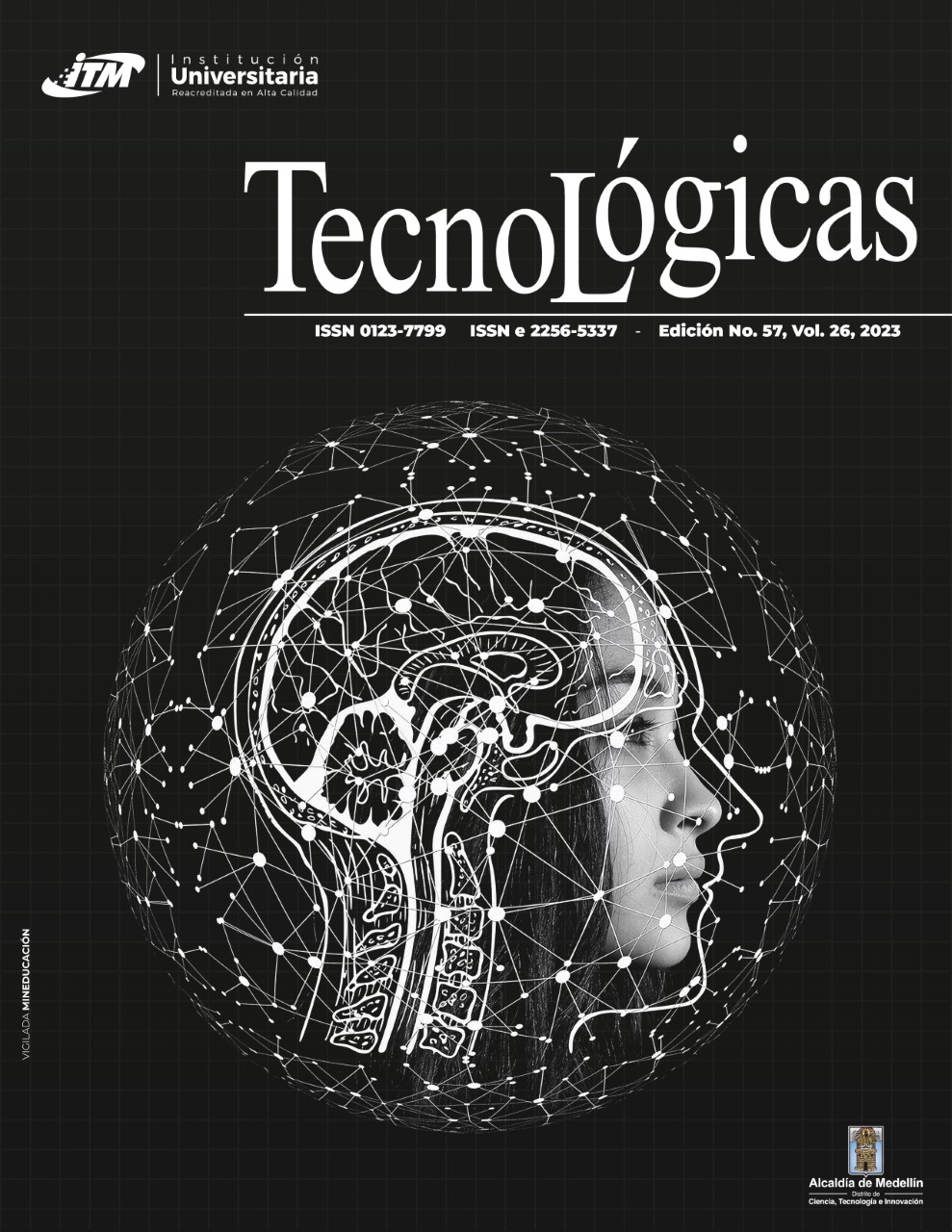Validación de la especificación formal del proceso THUNDERS
Resumen
El trabajo colaborativo permite incitar a los participantes a la construcción de conocimiento mediante la exploración, discusión, negociación y debate, con el fin de generar una mejor comprensión o entendimiento compartido de un concepto, problema o situación dentro de un grupo. El objetivo del trabajo colaborativo es encontrar ese entendimiento compartido, el cual se entiende como la concordancia o similitud existente en las percepciones de los participantes sobre una temática. Considerando esto, se puede determinar que cuanto mayor sea el entendimiento y la cohesión entre todos los miembros del equipo, mejores resultados se obtendrán en el desarrollo de las tareas y responsabilidades que cada uno de los miembros debe cumplir, generando mayor confianza grupal y permitiendo que todos avancen en la misma dirección. Sin embargo, dicho entendimiento no es fácil de construir, no hay claridad en cómo se debe construir, y sencillamente se da como algo obvio o que debe lograrse, sin darle la real importancia. Tratando de abordar estas problemáticas, a partir de la metodología de investigación-acción multiciclo se define THUNDERS, un proceso que establece cómo construir entendimiento compartido en actividades de resolución de problemas. Este artículo muestra los ciclos conceptual y metodológico para su construcción, y más en detalle el ciclo de validación, en el cual se realizaron: una validación de expertos de la especificación formal de THUNDERS para determinar la correctitud y completitud de su estructura, una validación de calidad de su modelo de proceso SPEM 2.0, y un experimento para validar su viabilidad y utilidad. Como resultado de estas validaciones se obtuvo que THUNDERS necesita mejorar elementos sintácticos, semánticos de su especificación, y la carga cognitiva que genera su uso. Además, se obtuvo que es un proceso viable y útil para la construcción de un entendimiento compartido con cada uno de los elementos que lo componen.
Referencias bibliográficas
D. Parmelee, L. K. Michaelsen, S. Cook, and P. D. Hudes, “Team-based learning: A practical guide: AMEE Guide No. 65,” Med Teach, vol. 34, no. 5, pp. e275–e287, May 2012. https://doi.org/10.3109/0142159X.2012.651179
P. N. Robillard, and M. P. Robillard, “Types of collaborative work in software engineering,” Journal of Systems and Software, vol. 53, no. 3, pp. 219–224, Sep. 2000. https://doi.org/10.1016/S0164-1212(00)00013-3
O. Kozar, “Towards Better Group Work: Seeing the Difference between Cooperation and Collaboration,” English Teaching Forum, vol. 48, no. 2, pp. 16–23, 2010. https://eric.ed.gov/?id=EJ914888
R. T. Johnson, and D. W. Johnson, “Active Learning: Cooperation in the Classroom,” The Annual Report of Educational Psychology in Japan, vol. 47, pp. 29–30, 2008. https://doi.org/10.5926/arepj1962.47.0_29
M. Vinagre Laranjeira, “Teoría y práctica del aprendizaje colaborativo asistido por ordenador,” 2010. https://redined.educacion.gob.es/xmlui/handle/11162/65234
P. Van den Bossche, W. Gijselaers, M. Segers, G. Woltjer, and P. Kirschner, “Team learning: building shared mental models,” Instr Sci, vol. 39, pp. 283–301, May 2011. https://doi.org/10.1007/s11251-010-9128-3
P. J. Hinds, and S. P. Weisband, “Knowledge sharing and shared understanding in virtual teams,” in Virtual teams that work: Creating conditions for virtual teams effectiveness, C. B. Gibson and S. G. Cohen, Eds., San Francisco, CA, Jossey-Bass, 2003, pp. 21–36. http://communicationcache.com/uploads/1/0/8/8/10887248/virtual_teams_that_work_creating_conditions_for_virtual_team_effectiveness.pdf#page=46
F. S. Corrêa da Silva, and J. Agustí-Cullell, Information Flow and Knowledge Sharing. Amsterdam: Elsevier, 2008. https://books.google.com.co/books?hl=es&lr=&id=QsdPMk7hdNQC&oi=fnd&pg=PP1&dq=F.+S.+Correa+da+Silva+and+J.+Agusti-Cullell,+%22Information+Flow+and+Knowledge+Sharing,%22+in+Shared+understanding,+Elsevier,+2008.+&ots=IFl77lNdih&sig=oQAmCED4iDzvp6n8OeSjoIat9SY&redir_esc=y#v=onepage&q&f=false
C. E. Wanstreet, and D. S. Stein, “Gender and Collaborative Knowledge Building in an Online Community of Inquiry,” in Encyclopedia of Information Communication Technologies and Adult Education Integration, IGI Global, 2010, pp. 707–722. https://doi.org/10.4018/978-1-61692-906-0.ch042
Y. Hsieh, “Culture and Shared Understanding in Distributed Requirements Engineering,” in 2006 IEEE International Conference on Global Software Engineering (ICGSE’06), Florianopolis2006, pp. 101–108. https://doi.org/10.1109/ICGSE.2006.261221
M. Kleinsmann, J. Buijs, and R. Valkenburg, “Understanding the complexity of knowledge integration in collaborative new product development teams: A case study,” Journal of Engineering and Technology Management, vol. 27, no. 1–2, pp. 20–32, Jun. 2010. https://doi.org/10.1016/j.jengtecman.2010.03.003
P. R. Smart, “Understanding and Shared Understanding in Military Coalitions,” Southampton, 2011. https://eprints.soton.ac.uk/267735/
V. Agredo-Delgado, P. H. Ruiz, and C. A. Collazos, “Building Shared Understanding with THUNDERS,”, in Iberoamerican Workshop on Human-Computer Interaction, Switzerland, Springer, 2022, pp. 68–87. https://doi.org/10.1007/978-3-031-24709-5_6
OMG specification, “Software & Systems Process Engineering Metamodel Specification. Version 2.0,” 2007. https://www.omg.org/spec/SPEM/2.0/PDF
M. C. Camacho, J. A. Hurtado, and P. Ruiz, “Un método incremental para el análisis visual de modelos de proceso software,” Gerencia en Tecnología Informatica, vol. 15, no. 43, pp. 79–91, Dec. 2016. https://revistas.uis.edu.co/index.php/revistagti/article/view/6822
F. J. Pino, M. Piattini, and G. Horta Travassos, “Gestionar y desarrollar proyectos de investigación distribuidos en ingeniería del software mediante la investigación-acción,” Revista Facultad de Ingeniería Universidad de Antioquia, vol. 68, Sep. 2013, http://www.scielo.org.co/scielo.php?pid=S0120-62302013000300007&script=sci_arttext&tlng=en
R. Granados, “Constructing intersubjectivity in representational design activities,” The Journal of Mathematical Behavior, vol. 19, no. 4, pp. 503–530, 2000. https://doi.org/10.1016/S0732-3123(01)00055-4
M. De Haan, “Intersubjectivity in models of learning and teaching: Reflections from a study of teaching and learning in a Mexican Mazahua community,” in The theory and practice of cultural-historical, Aarhus University Press, 2001, pp. 174–1999. https://psycnet.apa.org/record/2001-06251-010
E. A. C. Bittner, and J. M. Leimeister, “Creating Shared Understanding in Heterogeneous Work Groups: Why It Matters and How to Achieve It,” Journal of Management Information Systems, vol. 31, no. 1, pp. 111–144, Jul. 2014. https://doi.org/10.2753/MIS0742-1222310106
D. Gomes, P. Tzortzopoulos, and M. Kagioglou, “Collaboration through shared understanding in early design stage,” in 24th Ann. Conf. of the Int’l. Group for Lean Construction, Boston, 2016. https://eprints.hud.ac.uk/id/eprint/29052/
J. Kniel, and A. Comi, “Riding the Same Wavelength: Designers’ Perceptions of Shared Understanding in Remote Teams,” Sage Open, vol. 11, no. 3, Jul. 2021, https://doi.org/10.1177/21582440211040129
W. R. Sieck, L. J. Rasmussen, and P. Smart, “Cultural Network Analysis,” in Network Science for Military Coalition Operations, IGI Global, 2010, pp. 237–255. https://doi.org/10.4018/978-1-61520-855-5.ch011
E. D. Rosenman et al., “A Simulation-based Approach to Measuring Team Situational Awareness in Emergency Medicine: A Multicenter, Observational Study,” Academic Emergency Medicine, vol. 25, no. 2, pp. 196–204, Feb. 2018. https://doi.org/10.1111/acem.13257
F. O. Bjørnson, and T. Dingsøyr, “Knowledge management in software engineering: A systematic review of studied concepts, findings and research methods used,” Inf Softw Technol., vol. 50, no. 11, pp. 1055–1068, Oct. 2008. https://doi.org/10.1016/j.infsof.2008.03.006
A. Nakakawa, P. Van Bommel, E. H. A. Proper, and H. J. B. F. Mulder, “A Situational Method for Creating Shared Understanding on Requirements for an Enterprise Architecture,” Int J Coop Inf Syst, vol. 27, no. 04, Nov. 2018. https://doi.org/10.1142/S0218843018500107
S. McCarthy, P. O’Raghallaigh, C. Fitzgerald, and A. Frédéric, “Towards a framework for shared understanding and shared commitment in agile distributed ISD project teams,” in Proceedings of the 27th European Conference on Information Systems, Stockholm & Uppsala, 2019. https://cora.ucc.ie/items/065cd63a-495a-4855-a6a5-8d43fc60ac89
C. S. Dossick, L. Osburn, and B. Astaneh, “Measuring Shared Understanding: Developing Research Methods for Empirical Research on Interdisciplinary Engineering Team Practices,” in 15th Engineering Project Organization Conference, Manchester, 2017. https://www.researchgate.net/profile/Bita-Astaneh-Asl/publication/324646468_Measuring_Shared_Understanding_Developing_Research_Methods_for_Empirical_Research_on_Interdisciplinary_Engineering_Team_Practices/links/5ad98633aca272fdaf82127a/Measuring-Shared-Understanding-Developing-Research-Methods-for-Empirical-Research-on-Interdisciplinary-Engineering-Team-Practices.pdf
C. Jentsch, D. Beimborn, C. P. Jungnickl, and G. S. Renner, “How to Measure Shared Understanding among Business and IT,” Academy of Management, vol. 2014, no. 1, p. 16980, Jan. 2014. https://doi.org/10.5465/ambpp.2014.138.
J. Grudin, “Why CSCW applications fail: problems in the design and evaluation of organizational interfaces,” in Proceedings of the 1988 ACM conference on Computer-supported cooperative work, Austin, 1988, pp. 85–93. https://dl.acm.org/doi/pdf/10.1145/62266.62273
N. Rummel, and H. Spada, “Learning to Collaborate: An Instructional Approach to Promoting Collaborative Problem Solving in Computer-Mediated Settings,” Journal of the Learning Sciences, vol. 14, no. 2, pp. 201–241, Apr. 2005. https://doi.org/10.1207/s15327809jls1402_2
E. R. Lai, “Collaboration: A Literature Review,” Jun. 2011. https://docplayer.net/10473716-Collaboration-a-literature-review.html
W. S. Humphrey, “The software engineering process: definition and scope,” in Proceedings of the 4th international software process workshop on Representing and enacting the software process, New York, 1988, pp. 82–83. https://doi.org/10.1145/75110.75122
G. L. Kolfschoten, and G.-J. de Vreede, “The Collaboration Engineering Approach for Designing Collaboration Processes,” in Groupware: Design, Implementation, and Use 13th International Workshop, CRIWG 2007, Bariloche, 2007, pp. 95–110. https://doi.org/10.1007/978-3-540-74812-0_8
G.-J. Vreede, R. O. Briggs, and A. P. Massey, “Collaboration Engineering: Foundations and Opportunities: Editorial to the Special Issue on the Journal of the Association of Information Systems,” J Assoc Inf Syst, vol. 10, no. 3, pp. 121–137, Mar. 2009. https://doi.org/10.17705/1jais.00191
C. A. Collazos, J. Muñoz, and Y. Hernández, Aprendizaje colaborativo apoyado por computador. Iniciativa Latinoamericana de Libros de Texto Abiertos. 2014. https://api.mountainscholar.org/server/api/core/bitstreams/e3b08a51-c42a-4a05-9bdb-6aab1f996bf1/content
G. Stahl, “Group cognition in computer-assisted collaborative learning,” J Comput Assist Learn, vol. 21, no. 2, pp. 79–90, Apr. 2005. https://doi.org/10.1111/j.1365-2729.2005.00115.x
N. M. Webb, and A. S. Palincsar, “Group processes in the classroom”, in Handbook of Educational Psychology, New York: Prentice Hall International, 1996, pp. 841–873. https://psycnet.apa.org/record/1996-98614-025
M. Baker, “A model for negotiation in teaching-learning dialogues,” Journal of Artificial Intelligence in Education, vol. 5, no. 2, pp. 199–254, 1994. https://www.researchgate.net/profile/Michael-Baker-44/publication/32231399_A_model_for_negotiation_in_teaching-learning_dialogues/links/0046352727ab95f805000000/A-model-for-negotiation-in-teaching-learning-dialogues.pdf
E. A. C. Bittner, and J. M. Leimeister, “Why Shared Understanding Matters -- Engineering a Collaboration Process for Shared Understanding to Improve Collaboration Effectiveness in Heterogeneous Teams,” in 2013 46th Hawaii International Conference on System Sciences, Wailea2013, pp. 106–114. https://doi.org/10.1109/HICSS.2013.608
M. J. Garfield, and A. R. Dennis, “Toward an Integrated Model of Group Development: Disruption of Routines by Technology-Induced Change,” Journal of Management Information Systems, vol. 29, no. 3, pp. 43–86, Dec. 2012. https://doi.org/10.2753/MIS0742-1222290302
J. A. Hurtado Alegría, M. C. Bastarrica, and A. Bergel, “Avispa: a tool for analyzing software process models,” Journal of Software: Evolution and Process, vol. 26, no. 4, pp. 434–450, Apr. 2014. https://doi.org/10.1002/smr.1578
J. A. H. Alegría, A. Lagos, A. Bergel, and M. C. Bastarrica, “Software Process Model Blueprints,” in New Modeling Concepts for Today's Software Processes International Conference on Software Process, ICSP 2010, Paderborn, 2010, pp. 273–284. https://doi.org/10.1007/978-3-642-14347-2_24
G. Lescano, and R. Costaguta, “COLLAB: Conflicts and Sentiments in chats,” in Proceedings of the XIX International Conference on Human Computer Interaction, New York, 2018, pp. 1–4. https://doi.org/10.1145/3233824.3233864
G. Lescano, R. Costaguta, and A. Amandi, “Genetic algorithm for automatic group formation considering student’s learning styles,” in 2016 8th Euro American Conference on Telematics and Information Systems (EATIS), Cartagena, 2016, pp. 1–8. https://doi.org/10.1109/EATIS.2016.7520110
V. Agredo Delgado, P. H. Ruiz, C. A. Collazos, H. M. Fardoun, and A. Y. Noaman, “Software Tool to Support the Improvement of the Collaborative Learning Process,” in 12th Colombian Conference on Computing, CCC 2017, Cali, 2017, pp. 442–454 https://doi.org/10.1007/978-3-319-66562-7_32
H. R. Neave, Elementary Statistics Tables, 2nd ed. Routledge, 2011. https://www.routledge.com/Elementary-Statistics-Tables/Neave/p/book/9780415563475
V. Agredo-Delgado, P. H. Ruiz, A. Mon, C. A. Collazos, F. Moreira, and H. M. Fardoun, “Validating the Shared Understanding Construction in Computer Supported Collaborative Work in a Problem-Solving Activity,” in Trends and Innovations in Information Systems and Technologies, Cham, Springer, 2020, pp. 203–214. https://doi.org/10.1007/978-3-030-45697-9_20
Descargas
Derechos de autor 2023 TecnoLógicas

Esta obra está bajo una licencia internacional Creative Commons Atribución-NoComercial-CompartirIgual 4.0.

| Estadísticas de artículo | |
|---|---|
| Vistas de resúmenes | |
| Vistas de PDF | |
| Descargas de PDF | |
| Vistas de HTML | |
| Otras vistas | |








